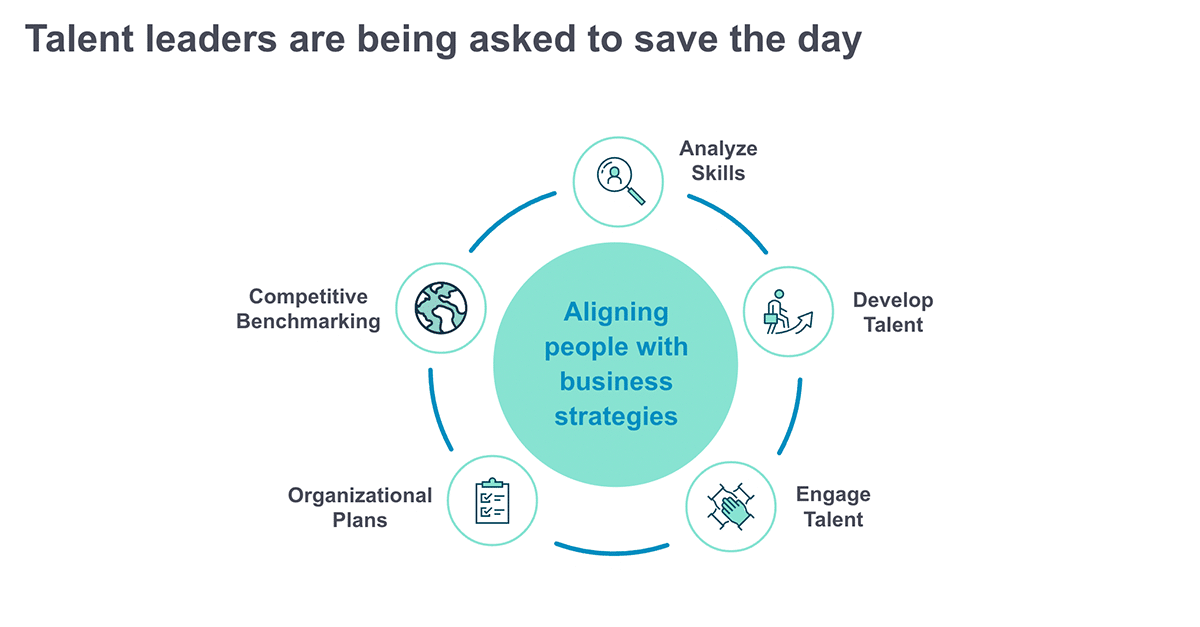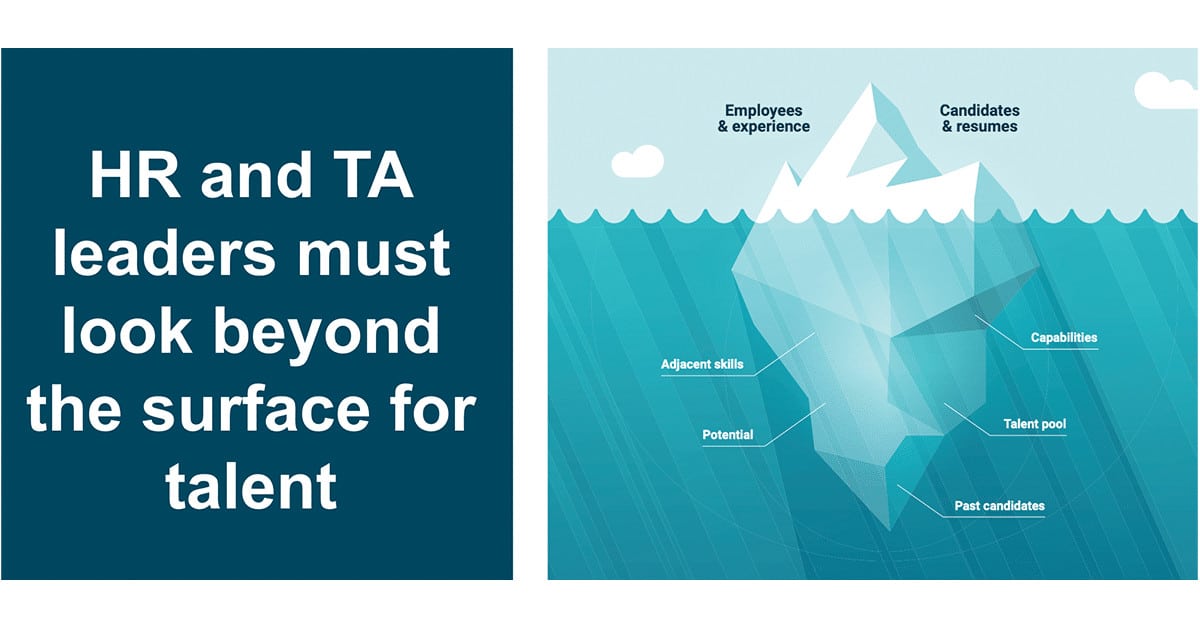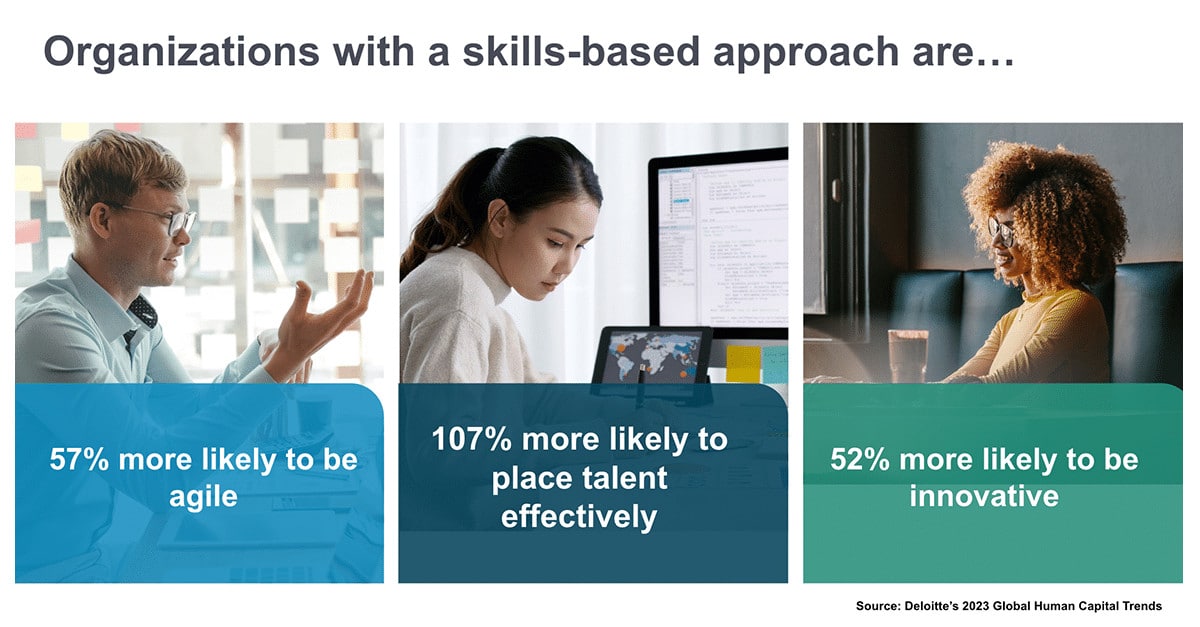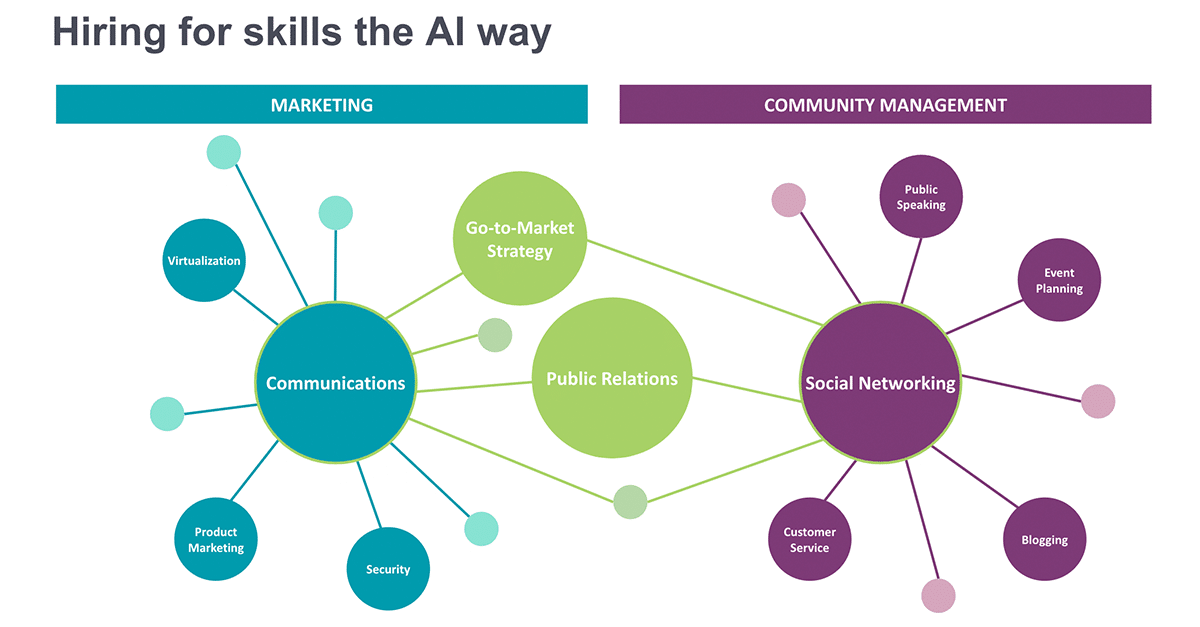Sometimes, it feels like hiring managers believe the perfect candidates grow on trees. Or at least it seems that way when they expect recruiters to find candidates overnight. Today, talent acquisition leaders are expected to do more than ever with fewer resources — less budget, head count, and time.
How did we get here? Over the past five years, every month seemingly heralded a new headline that promised to change recruiting: the Great Resignation, the Great Reshuffling, the talent shortage, quiet quitting, quiet hiring — you get the idea.
Today, economic uncertainty and talk of a recession are prompting mass layoffs across industries like tech, finance, retail, auto, and manufacturing. Many organizations that were in a hiring frenzy just last year are now cutting back. Some businesses are even posting ghost jobs, roles they have no intent to fill but make their organization look healthy because they’re “hiring.”
It’s no surprise that in a Sage Group survey, 91 percent of HR and C-suite leaders said the HR role has transformed dramatically in the past five years, and 41 percent of executives don’t think drastic change will slow down anytime soon.
Organizations are realizing they can’t succeed without the right people, and to find them, they need a strong talent acquisition team. But recruiters today are burdened with manual, outdated processes, like scouring job boards and sifting through endless résumés. And if they can’t find candidates with the right skills, they’re expected to help with upskilling and reskilling.

Source: Eightfold AI
So how can recruiters save the day while making their lives easier? In this recent webinar, I spoke with Andraya Lund, former Head of People at esports organization Version1 + Minnesota RØKKR, about how talent leaders can become strategic advisers for the business while using a skills-based approach to fill positions with the right people. Here are a few takeaways.
RELATED CONTENT: Watch our latest podcast featuring Deloitte talent experts on architecting the future of workforces with skills-based strategies.
Talent acquisition is an investment, not an expense
Unfortunately, the recruiting team doesn’t always get the budget it deserves. Organizations often view TA as a cost center, not a business driver. Generating revenue is for sales and marketing, right? Not so. Success hinges on hiring the right people — on the TA team. This reality is especially prevalent in startups where it’s incredibly costly to not hire the right people.
So while recruiters know what they need to do — find talented people — they don’t always get the funding they need to get it done, whether that’s in the form of more head count or sufficient software investments like automation and AI. The solution is for recruiters to gain more visibility as strategic business advisers.
When recruiters showcase that they understand what the business does, what its goals are, and can explain what’s stopping the business from reaching those goals, they aren’t just seen as an expense. They become a strategic asset, business partners who can make a clear case for how they can bring more talented people on board with the help of technology investments that offload repeatable, mundane work and allow them to do more value-add work.
Move beyond résumés to a skills-based approach
To go deeper into the tech point, without the right software, recruiters can get endlessly bogged down in labor-intensive work, searching job boards, manually typing in keywords, and running Boolean searches on résumés. Each résumé, at best, gets a 30-45 second scan, and if the “right” keywords aren’t listed, that candidate will never get a second look. And forget about searching your ATS. This creates a time crunch that makes it tough to justify each candidate to hiring managers, especially if you’re not doing any matching on skills and potential.
A skills-based approach can help you see beyond résumés and find the best fit for a role using facts and data — because, remember, résumés aren’t verified documents. They’re just words that somebody thought told their story. There’s so much more to that story than what shows up on that one- or two-sheet summary of a person’s work history, like potential and skills adjacencies.
For example, Lund worked for a startup where she put together a strategy to attract people from the military. She knew these candidates would have the required skills to fill the company’s open roles, but getting past the words on paper and digging for capabilities was difficult for her team.
“Their résumés were atrocious. And it was very hard for some of these managers who are also new to managing to be able to see the potential and the transferable skills on those résumés,” Lund said. To embark on a skills-based approach to hiring, HR and TA must look beyond résumés.

Source: Eightfold AI
Implementing a skills-based approach, with or without AI, can help you connect the dots between a candidate and the role you’re hiring for. This is especially important with how quickly digital skills are changing. Sometimes, hiring managers ask for roles that don’t exist yet. When you can uncover skill adjacencies that transfer to a niche role, you can find candidates highly likely to succeed. Even if you don’t have AI, you can still use a skills-based approach to find quality candidates.
Let’s return to our previous example of hiring veterans. This group holds incredible untapped potential, as former military members tend to have many valuable real-world skills that can easily translate to the private or public sector. These include strong leadership and decision-making skills, training in the latest technology, and a strong commitment to executing on an organization’s overall mission, among many other positive traits.

RELATED CONTENT: Read our latest Talent Insights report on why building DEI in any organization is good for business.
Using a skills-based approach with or without AI
According to Sage Group, 59 percent of HR and C-suite leaders have adopted some kind of automation, analytics, machine learning, or AI in their HR space. Using AI to hire for skills allows TA teams to surface highly compatible candidates with adjacent skills from a wide talent pool of candidates, alumni, and contingent workers.
Let’s say your organization is sourcing a marketing role. With AI, you can look at related skills you may not have considered and open up the talent pool beyond marketers. For example, community managers share common skills with marketers, such as public relations, communications, and social networking. You can now take this data to your hiring manager and explain exactly why candidates with community manager backgrounds could be successful marketers.
“Even just looking at my own career,” Lund said, “I started out as a recruiter and then moved all the way to a Chief People Officer. That tells me there’s opportunity to diversify your skill set and grow in your career.”

Source: Eightfold AI
And while it can make it much easier, you don’t need AI to start using a skills-based approach. You can begin by creating different personas for candidates. Start by defining your “ideal” candidate, and then brainstorm which types of people with different backgrounds and skills adjacencies could also be great fits. This will help you widen your focus and your talent pool.
Inclusion and belonging start in the hiring process
While inclusion and belonging are essential for HR teams and organizations, it’s not always considered part of a recruiter’s job to help build, but, as Lund said, an inclusive organization starts from the ground up. It starts with a candidate’s first interaction with an organization, their interview.
“Things like glancing at clocks during interviews don’t create inclusion. If you know your interviewers don’t take the time to really learn how to pronounce a candidate’s name, that’s huge,” Lund said. “Those are microaggressions at a micro level, and that completely violates that sense of inclusion and belonging within your organization. What’s interesting about it is, when you change how you embed these behaviors in your company, you’ll see that it changes how your employees work with your customers, how you engage with vendors, how you select board members, or how you even interact with your community. Because how you do one thing is how you do all things.”
Now, go save the day
In times of uncertainty, innovative talent acquisition strategies can help recruiters weather the turbulence and become heroes for their organization. Understanding the business inside and out and investing in finding the right people with the right skills — while focusing on inclusion and belonging — will make any recruiter shine.
Rebecca Warren is the Director of Customer Success at Eightfold AI. Warren leads a team of Customer Success Executives at Eightfold to help clients unlock their workforce’s potential.
Watch the entire webinar, “Doing more with less: Creating an agile and adaptive talent acquisition strategy,” to learn more about building an agile workforce with a skills-driven approach.










